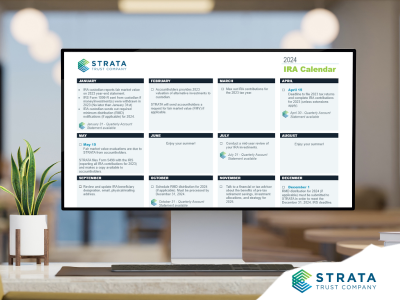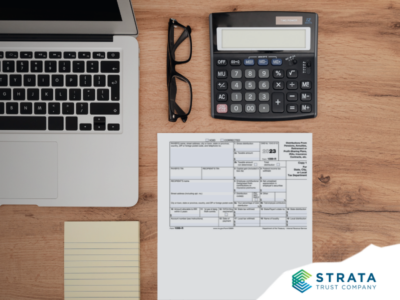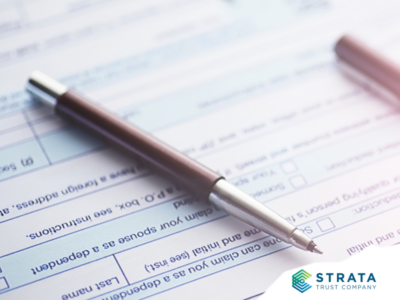Among the many SECURE 2.0 Act provisions, there are some that affect relatively few individuals but that provide considerable benefit to those who qualify. One such provision allows certain distributions from a qualified tuition program—or 529 plan—to be rolled over to the plan beneficiary’s Roth IRA. Normally, nonqualified 529 plan distributions are subject to a 10 percent additional tax (penalty) on the portion of the withdrawal that represents earnings, but Section 126 of the SECURE 2.0 Act makes a notable exception.
Starting in 2024, certain 529 plan distributions that are directly rolled over to the plan beneficiary’s Roth IRA will not be subject to the additional tax. But more importantly, such rollovers will allow qualified beneficiaries to boost their Roth IRAs in a new way.
Background on the New Rule
Contributions to 529 plans are not tax deductible. But distributions—including earnings—for qualified education expenses are tax free. So 529 distribution rules are similar in some respects to Roth IRA rules: earnings can grow tax free if used for the right reasons. Yet, sometimes 529 plan assets cannot be used as intended. For example, maybe a college-bound student receives a full scholarship, or perhaps the beneficiary decides not to attend an eligible school at all. In such cases, taking a distribution from the 529 plan normally makes the earnings portion taxable and subject to a 10 percent penalty.
Fortunately, the beneficiary on the account can be changed to a sibling or other close relative. Even so, this may not always be a suitable option—so Congress added this new provision to alleviate a potential tax burden and to encourage future 529 plan contributions.
Rollover from 529 Plan to Roth IRA: Important Restrictions
This provision offers relief to those who have saved for education expenses in the past and who now face adverse tax consequences because they cannot take a qualified distribution for such expenses. It is not, however, intended to create a short-term incentive to invest in a 529 plan, as you can see from the following restrictions.
Fifteen-Year Requirement: The 529 account from which assets are rolled over to the beneficiary’s Roth IRA must have been maintained for at least 15 years as of the date of distribution.
Five-Year Requirement: The assets involved in the Roth rollover must have been in the 529 account for at least five years as of the date of distribution.
Lifetime Rollover Limitation: The beneficiary can receive no more than $35,000 in aggregate using this provision.
Other Eligibility Restrictions: The beneficiary who receives Roth rollovers from the 529 plan is subject to the annual contribution limit (e.g., $7,000 for 2024) and must have earned income at least equal to the rollover amount. Any such Roth rollover reduces the individual’s annual Roth contribution, and vice versa. But nothing in the text of this provision seems to reduce the annual rollover amount based on the beneficiary having income that exceeds the usual modified adjusted gross income (MAGI) limits for Roth IRA contribution eligibility.
Direct Payment to Roth Trustee or Custodian: Although the Internal Revenue Code (and the IRS) refers to this new transaction as a “rollover,” it is not reported as a rollover in Box 2 of IRS Form 5498. Rather, it is reported in Box 10, “Roth IRA Contributions,” presumably because it is subject to the annual contribution limit and timing restrictions. And despite the rollover moniker, the assets must be paid in a “direct trustee-to-trustee transfer” to a Roth IRA. So even though the transaction is reported—unlike typical transfers—the assets must be paid directly to the receiving financial organization that administers the Roth IRA. The beneficiary does not have the option of receiving a distribution and then placing it in a Roth IRA within 60 days.
Additional Guidance Is Needed
As with many SECURE 2.0 Act provisions, questions have arisen and may need to be resolved through additional IRS guidance. For instance, assume that substantial 529 assets remain after educational expenses have been met. Could a parent change the beneficiary on the 529 account to a second child after fully funding the Roth IRA of a first child? Or would a new 15-year period have to be met? Fortunately, questions like these will likely not interfere with taking advantage of this new benefit in the near term.
Rolling over assets into a Roth IRA using this provision may not be an option for most individuals. But for those who are eligible, rolling over 529 assets can be a great way for younger individuals to boost Roth IRA savings. And, considering the long-term benefits of creating potentially tax-free earnings, a self-directed Roth IRA may be a good fit for younger individuals (especially) seeking to attain their retirement savings goals.
Visit the Rollover section in our Self-Directed IRA Kowledge Center for more information on IRA rollovers. You can also contact our SDIRA experts with any questions you may have related to initiating a rollover with your STRATA IRA.









